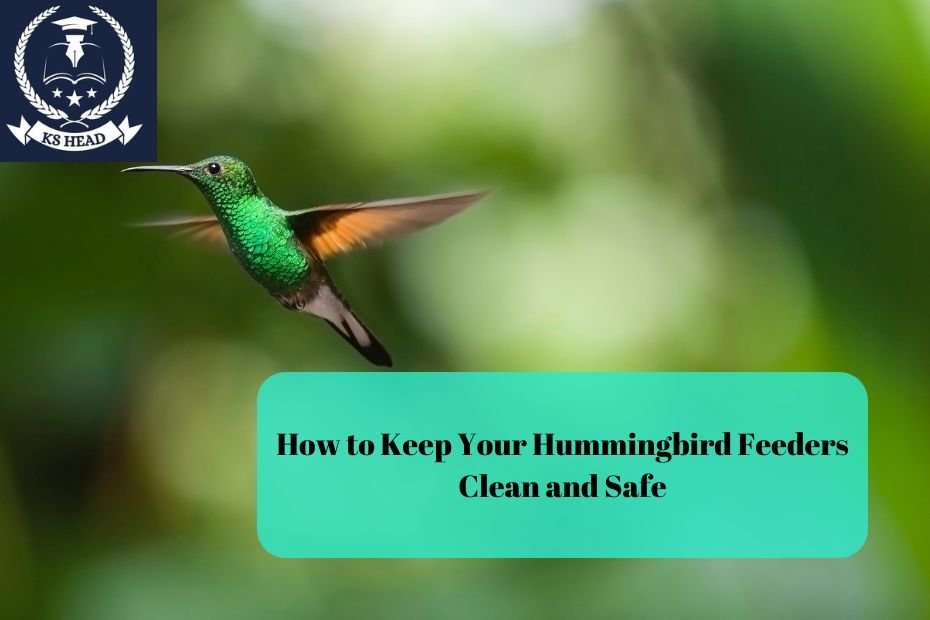Hummingbirds are among the most intriguing and vibrant birds in the world. Known for their dazzling colors and remarkable flying abilities, these tiny creatures also have unique dietary needs that play a crucial role in their survival and ecological impact. This article delves into the diet of wild hummingbirds, exploring their feeding habits, preferred food sources, and the essential nutrients they require.
Understanding Hummingbird Nutrition
Nectar: The Primary Food Source
The primary food source for hummingbirds is nectar, a sugary liquid produced by flowering plants. Nectar provides essential carbohydrates, which are crucial for the high-energy lifestyle of these birds. Hummingbirds have specialized tongues that allow them to lap up nectar from deep within flowers. Their tongues are elongated and can extend beyond their bills, enabling them to reach the nectar efficiently.
- Sugar Content: The sugar content in nectar typically ranges from 10% to 40%, depending on the plant species. Hummingbirds prefer flowers with higher sugar concentrations as these provide more energy in less time.
- Flower Types: Hummingbirds are attracted to brightly colored flowers, particularly those that are red, orange, or tubular in shape. These colors and shapes are often indicators of high nectar content, making them ideal feeding spots.
Insects and Spiders: Essential Protein Sources
While nectar constitutes the majority of their diet, hummingbirds also consume small insects and spiders for protein, essential amino acids, and other nutrients. This protein is crucial for muscle development and the overall health of hummingbirds, particularly during breeding seasons when they need extra energy and nutrients.
- Types of Insects: Hummingbirds typically eat tiny insects such as aphids, gnats, and fruit flies. They may also consume spider silk and small spiders, which are rich in protein.
- Hunting Techniques: Hummingbirds capture insects mid-flight or forage on leaves and flowers to find them. Their agility and speed allow them to dart around and catch insects efficiently.
Water: Staying Hydrated
Although hummingbirds primarily obtain moisture from nectar, they also need to drink water to stay hydrated. They will visit puddles, streams, or rain-soaked areas to drink water, especially in hot weather.
- Hydration Needs: It’s crucial for hummingbirds to stay hydrated, especially in regions where nectar sources may be scarce. They can also derive some moisture from the fruits they consume.
Fruits: Additional Nutrient Sources
In addition to nectar and insects, some hummingbirds incorporate fruits into their diet. Fruits provide additional sugars and vitamins, which are essential for their health.
- Types of Fruits: Hummingbirds may eat berries, small fruits, and tree sap. They are particularly attracted to fruits that are sweet and have high water content.
- Foraging Behavior: Hummingbirds will often be seen hovering near fruit-bearing plants and trees, pecking at the flesh to extract the juices. This behavior also aids in seed dispersal, contributing to the ecosystem.
Feeding Habits of Hummingbirds
Foraging Techniques
Hummingbirds have developed several foraging techniques to locate and extract food efficiently:
- Hovering: Hummingbirds can hover in mid-air while feeding, allowing them to maintain a stable position while accessing nectar from flowers.
- Darting: They can dart from flower to flower, quickly covering distances to find the best feeding spots. Their agility enables them to maneuver through dense foliage and evade predators.
- Perching: Hummingbirds often perch near feeding sites, surveying their surroundings for potential food sources or competitors.
Territorial Behavior
Many hummingbird species exhibit territorial behavior, especially males. They defend their feeding territories vigorously against other hummingbirds, ensuring that they have exclusive access to high-quality nectar sources.
- Aggressive Defense: Male hummingbirds will chase away intruders and perform aerial displays to assert dominance over their territory. This behavior can lead to frequent confrontations among competing males.
- Feeding Territories: Territories are often established around flowering plants or feeders. By defending these areas, male hummingbirds can maximize their access to food and increase their chances of successful breeding.
Seasonal Variations in Diet
Migration and Food Availability
Hummingbirds are migratory birds, and their diet can change significantly with the seasons. During migration, they rely heavily on available food sources to build fat reserves for long journeys.
- Spring Migration: As hummingbirds return north in spring, they search for flowering plants that provide nectar. The timing of their migration is closely linked to the blooming of these flowers.
- Breeding Season: During breeding season, females need extra protein for egg production. This increased demand leads them to consume more insects and spiders to meet their nutritional needs.
Impact of Climate and Weather
Weather conditions also influence the availability of food sources for hummingbirds. Droughts, heavy rains, and changing temperatures can affect the blooming of flowers and the abundance of insects.
- Adaptation: Hummingbirds are adaptable and can alter their foraging patterns based on food availability. They may migrate earlier or later in response to environmental changes, optimizing their access to nectar sources.
Ecological Role of Hummingbirds
Pollination
Hummingbirds play a vital role in pollination, aiding in the reproduction of many flowering plants. As they feed on nectar, they transfer pollen from one flower to another, facilitating cross-pollination.
- Plant Relationships: Many plants have evolved traits specifically to attract hummingbirds, such as tubular flowers and vibrant colors. This mutual relationship benefits both the birds and the plants.
- Diversity of Species: Hummingbird pollination supports plant diversity in ecosystems, contributing to healthy and balanced environments.
Seed Dispersal
In addition to pollination, hummingbirds also contribute to seed dispersal. By consuming fruits and berries, they help spread seeds throughout their habitats, promoting plant growth in new areas.
- Ecological Impact: This natural process is essential for maintaining biodiversity and supporting the overall health of ecosystems.
Challenges to Hummingbird Diets
Habitat Loss
One of the most significant challenges facing hummingbirds is habitat loss due to urban development, agriculture, and deforestation. The destruction of natural habitats directly impacts their food sources and nesting sites.
- Consequences: As flowering plants decline, hummingbirds face increased competition for nectar and reduced access to essential nutrients. This can lead to population declines and disrupt local ecosystems.
Climate Change
Climate change is altering the timing of flower blooming and the availability of insects, affecting the feeding patterns of hummingbirds. Warmer temperatures may cause flowers to bloom earlier, misaligning with the migratory patterns of these birds.
- Adaptation Challenges: Hummingbirds may struggle to adapt to rapidly changing environments, leading to potential declines in population numbers.
Pesticide Use
The use of pesticides in agriculture can have harmful effects on hummingbirds. Pesticides not only reduce the availability of insects but can also be toxic to these birds.
- Health Risks: Ingesting contaminated insects or nectar can lead to health issues for hummingbirds, impacting their survival rates and reproductive success.
Conservation Efforts
Creating Hummingbird-Friendly Habitats
To support hummingbird populations, individuals and communities can take action by creating hummingbird-friendly habitats. This can include:
- Planting Native Flowers: Planting native flowering plants that provide nectar can attract hummingbirds and support their feeding needs.
- Providing Water Sources: Adding water features, such as birdbaths or small ponds, can help meet their hydration needs.
- Reducing Pesticide Use: Limiting pesticide use can help maintain healthy insect populations, ensuring hummingbirds have access to protein sources.
Supporting Conservation Organizations
Many organizations are dedicated to the conservation of hummingbirds and their habitats. Supporting these groups through donations or volunteer work can significantly impact preserving these remarkable birds.
Conclusion
Hummingbirds are fascinating creatures with complex dietary needs that reflect their unique adaptations and ecological roles. By understanding their diets—primarily nectar, supplemented with insects and fruits—we can appreciate their importance in ecosystems and take steps to protect their habitats.
As we face challenges like habitat loss, climate change, and pesticide use, conservation efforts become increasingly vital. By creating hummingbird-friendly spaces and supporting conservation initiatives, we can help ensure that these vibrant birds continue to thrive in the wild for generations to come.
FAQs
- What is the primary food source for hummingbirds?
- The primary food source for hummingbirds is nectar from flowers, which provides essential carbohydrates.
- Do hummingbirds eat insects?
- Yes, hummingbirds eat small insects and spiders to obtain necessary protein and nutrients.
- How can I attract hummingbirds to my garden?
- You can attract hummingbirds by planting native flowering plants, providing hummingbird feeders, and reducing pesticide use.
- Do all hummingbirds migrate?
- Most hummingbird species are migratory, traveling between their breeding and wintering grounds in response to seasonal changes.
- How do climate changes affect hummingbird diets?
- Climate change can alter the timing of flower blooming and the availability of insects, affecting hummingbirds’ feeding patterns and overall survival.

